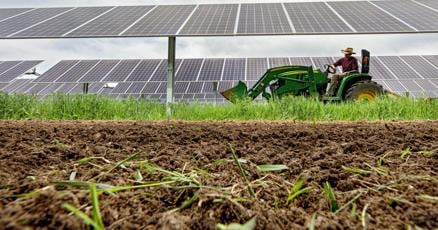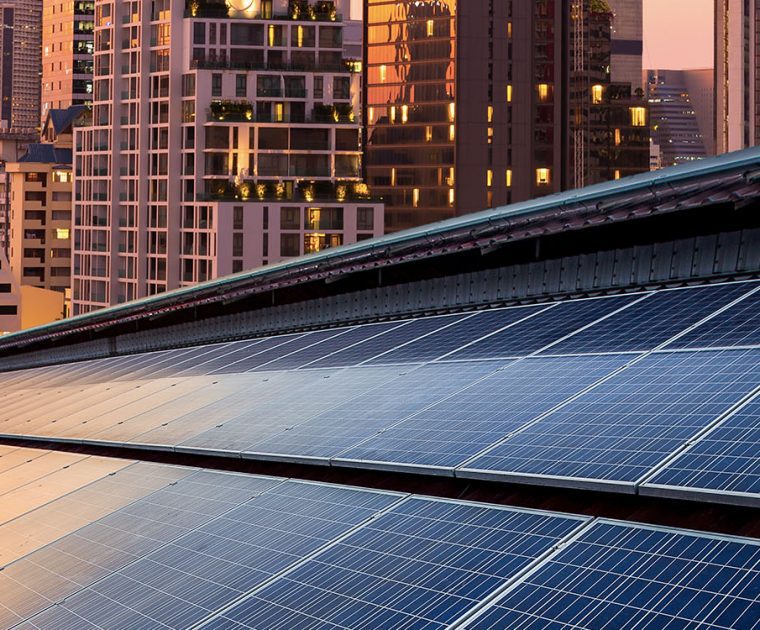As the global population grows and climate change accelerates, farmers face increasing pressure to produce food while conserving land, water, and energy. One innovative solution that combines agricultural productivity with renewable energy generation is solar agrivoltaics—the integration of solar panels into farmland. By harnessing the power of the sun for both energy and agriculture, agrivoltaics provide a promising path toward a more sustainable and resilient farming industry.
What Is Agrivoltaics?
Agrivoltaics, also known as dual-use solar, involves placing solar panels above or around crops, allowing farmers to simultaneously produce food and generate electricity. These systems can be designed in multiple ways:
- Elevated Panels: Solar panels are mounted at a height that enables crops, livestock, or farm equipment to operate underneath.
- Strategically Spaced Panels: Panels are arranged to allow sufficient sunlight for crops while maximizing energy production.
- Tracking Systems: Some solar panels are designed to tilt throughout the day, following the sun, optimizing both energy generation and light distribution for crops.
This approach not only conserves space but also creates a mutually beneficial relationship between agriculture and clean energy.
Benefits of Solar Agrivoltaics
- Improved Land Efficiency By combining farming and energy production, agrivoltaics maximizes land use without forcing farmers to choose between food production and solar energy. This is particularly valuable in regions where arable land is scarce.
- Enhanced Crop Growth and Water Conservation Studies show that some crops benefit from the shade provided by solar panels. Reduced direct sunlight can lower plant stress, slow evaporation, and decrease irrigation needs—making agrivoltaics especially beneficial in drought-prone areas.
- Renewable Energy Production Farmers can generate their own electricity, reducing reliance on fossil fuels and lowering energy costs. Excess solar power can be stored in batteries or sold back to the grid, providing an additional source of revenue.
- Climate Resilience Extreme weather events and rising temperatures pose challenges for farmers worldwide. Solar panels can help mitigate these risks by offering shade, reducing wind impact, and maintaining stable microclimates.
- Diversified Income for Farmers Beyond traditional agricultural income, farmers implementing agrivoltaics systems can benefit from leasing land to solar developers or selling surplus energy. This additional revenue stream can help stabilize farm finances in uncertain market conditions.
Considerations
If you are considering Agrivoltaics here are some things to consider:
Initial Investment Costs
Setting up solar panels requires a lot of capital, which can be a barrier for small-scale farmers. However, there are financing options, including for nonprofits, as well as government incentives and subsidies to offset costs.
Crop Compatibility
Some crops may be more suitable for agrivoltaics systems than others. Leafy greens, berries, and root vegetables often perform well under partial shade, while certain sun-loving crops may require modified setups.
Technical and Maintenance Considerations
• Ensure that there is easy access for farming operations and panel maintenance.
• Choose the optimal array location and configuration for specific climates.
The Future of Agrivoltaics
As interest in sustainable farming and renewable energy continues to grow, agrivoltaics is booming in the United States with thousands of farms investing in large-scale agrivoltaics projects. This innovative approach could revolutionize food production, while technological advancements continue to improve system efficiency.
For farmers, policymakers, and energy providers, agrivoltaics represents a unique opportunity to create a future where agriculture and clean energy go hand in hand.
Ready to explore agrivoltaics for your farm?
Click here and contact us today to learn more about sustainable solutions and financing options!










